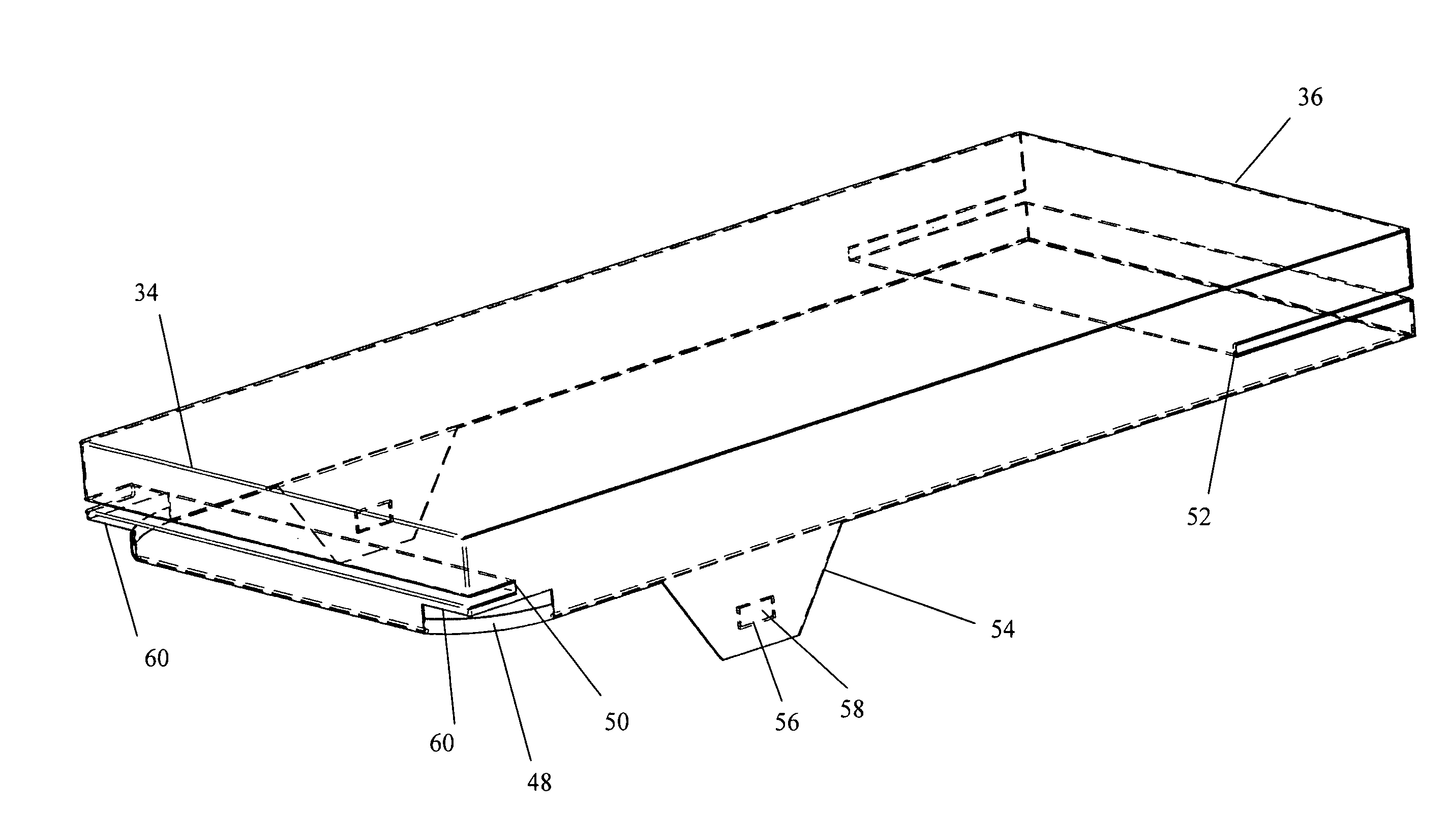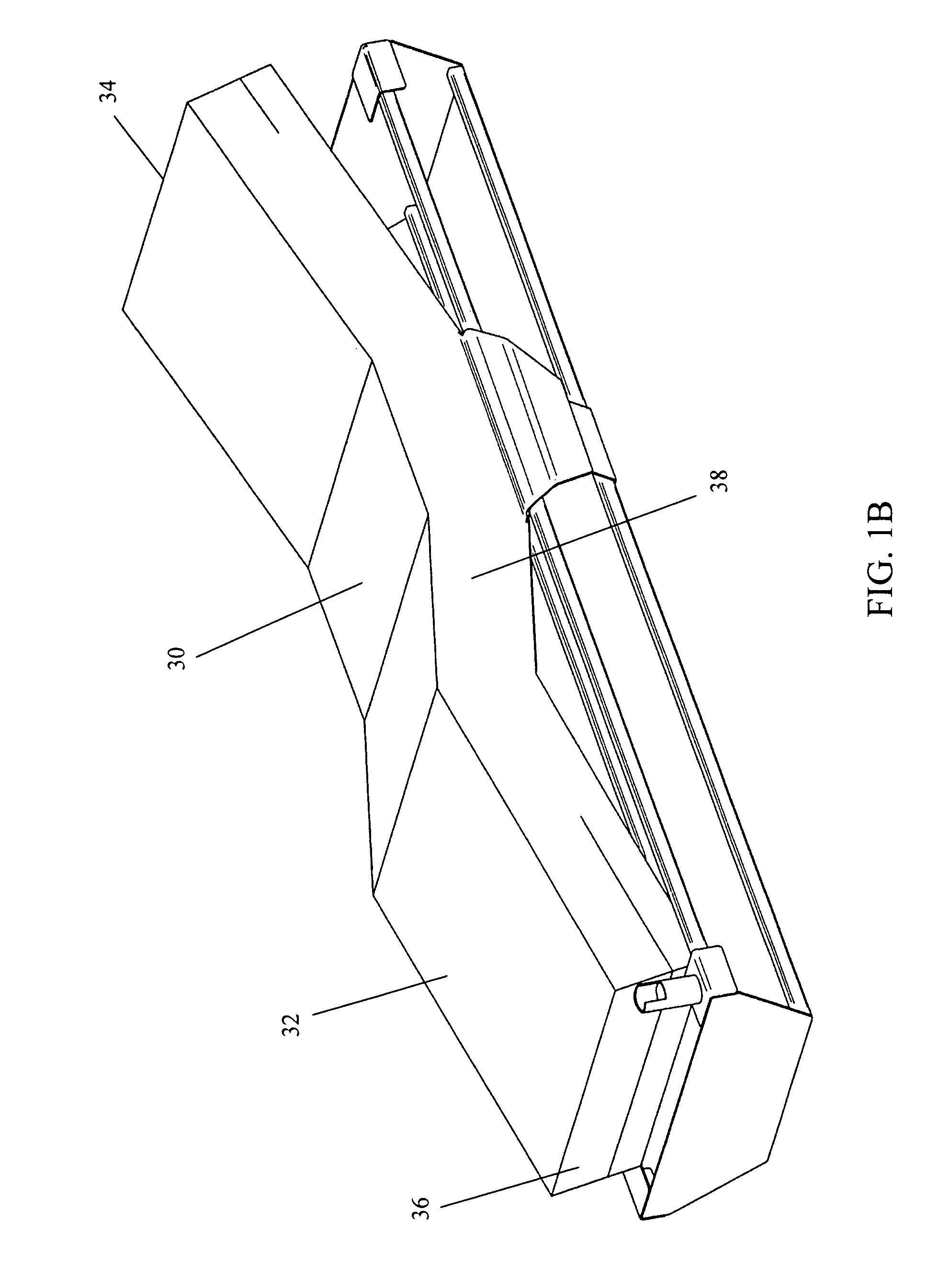Mattress and bed deck cover
a mattress and bed deck technology, applied in the field of mattress and bed deck covers, can solve the problems of inability to restrict access to these devices or controls, inability to tuck bedding material into and loss of access to the space between the mattress and the bed deck. , to achieve the effect of reducing the exposure of the mattress and the bed deck
- Summary
- Abstract
- Description
- Claims
- Application Information
AI Technical Summary
Benefits of technology
Problems solved by technology
Method used
Image
Examples
first embodiment
[0027]FIGS. 1-3 depict a mattress and bed deck cover. As shown in FIG. 1A, a mattress 10 includes a mattress top 12, mattress sides 14, and mattress bottom 16. An adjustable bed 18 incorporates a bed deck 20 which supports and underlies the mattress 10. The bed deck 20 includes a bed deck top 22, bed deck sides 24, and bed deck bottom 26. The bed deck 20 also includes at least one pivot point 28 about which the bed deck 20 and mattress 10 may be articulated. As shown in FIG. 1B, the mattress and bed deck cover 30 includes a top surface 32, a head end 34 descending from the top surface 32, a foot end 36 descending from the top surface 32 and opposing the head end 34, and a pair of opposing sides 38 descending from the top surface 32 and substantially perpendicular to the head end 34 and the foot end 36 and connected thereto. The cover 30 may enclose at least the mattress top 12, mattress sides 14, and at least a portion of the mattress bottom 16, and at least a portion of the bed dec...
second embodiment
[0040]In the second embodiment, the bed deck 20 is 36 (91 cm) inches wide by 80 inches (203 cm) long by 1.5 inches (3.8 cm) high. In this embodiment, the mattress 10 is sized 36.5 inches (93 cm) wide by 80 inches (203 cm) long by 6 inches (15 cm) high. In this embodiment, the mattress and bed deck cover 130 is sized to snugly fit the mattress 10 and bed deck 20. The mattress and bed deck cover 130 is about 80 inches (203 cm) in long, 36.5 inches (93 cm) wide and 7.375 inches (18.7 cm) high.
[0041]In this second embodiment the head end channel 150 has a length of about 9.0 inches (22.9 cm), is located at a height of about 4.625 inches (11.75 cm) from the top surface 132 of the cover 130, and has a height of 0.625 inches (1.6 cm). The foot end channel 152 has a length of about 15 inches (38.1 cm), is located at a height of about 4.75 inches (12.1 cm) from the top surface 132 of the cover 130, and has a height of 0.375 inches (1.0 cm). The channels 150, 152 extend the full width of the ...
PUM
 Login to View More
Login to View More Abstract
Description
Claims
Application Information
 Login to View More
Login to View More - R&D
- Intellectual Property
- Life Sciences
- Materials
- Tech Scout
- Unparalleled Data Quality
- Higher Quality Content
- 60% Fewer Hallucinations
Browse by: Latest US Patents, China's latest patents, Technical Efficacy Thesaurus, Application Domain, Technology Topic, Popular Technical Reports.
© 2025 PatSnap. All rights reserved.Legal|Privacy policy|Modern Slavery Act Transparency Statement|Sitemap|About US| Contact US: help@patsnap.com



